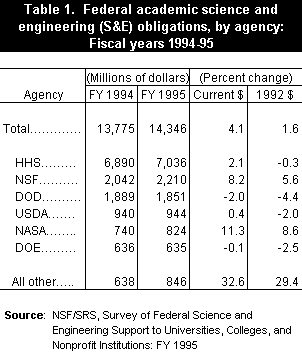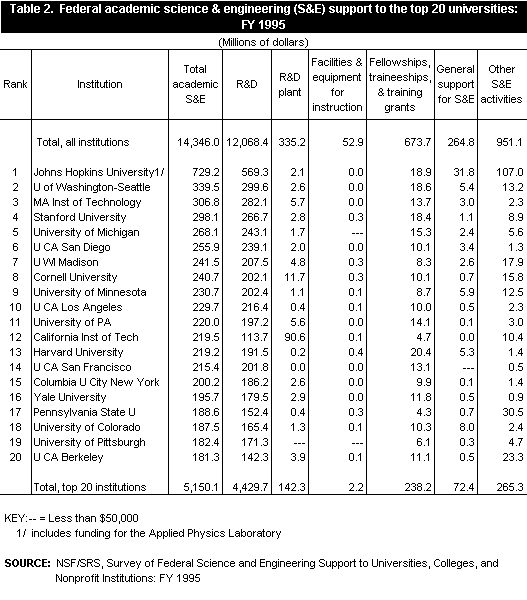By Richard J.
Bennof
Categories of Support
The six academic S&E funding categories in the Federal S&E Support Survey are: (1) research and development (R&D); (2) fellowships, traineeships, and training grants (FTTG); (3) R&D plant; (4) facilities and equipment for instruction; (5) general support for S&E; and (6) other S&E activities. R&D programs have maintained a consistent dominance of the academic S&E total in recent years (chart 1). About five-sixths of reported academic S&E funds were for R&D programs ($12.1 billion) in FY 1995, up more than 2 percent from the FY 1994 level (a negligible decrease, however, when the 2.5-percent inflation rate is taken into account). Department of Health and Human Services (HHS) projects accounted for more than one-half ($6.5 billion) of all academic R&D obligations.
Each of the other five academic S&E categories showed increased funding levels in FY 1995, and all of them, except "other S&E activities" (its current-dollar record was $992 million in FY 1992), increased to new highs at rates exceeding inflation. The "other S&E activities" category includes all academic S&E activities that cannot meaningfully be assigned to one of the other five categories. FTTG support, up 6 percent in current dollars, rose to $674 million; HHS accounted for the majority of the increase. R&D plant funds grew 56 percent to $335 million, largely from NSF projects funded from the agency's Major Research Equipment and Academic Research Infrastructure accounts. Facilities and equipment for instruction were up 7 percent to $53 million, all of the increase attributable to the Department of Defense (DOD). General support for S&E nearly doubled to $265 million because of more complete reporting from the Agency for International Development (AID). General support for S&E includes activities that provide support for nonspecific or generalized purposes related to scientific research and education.




